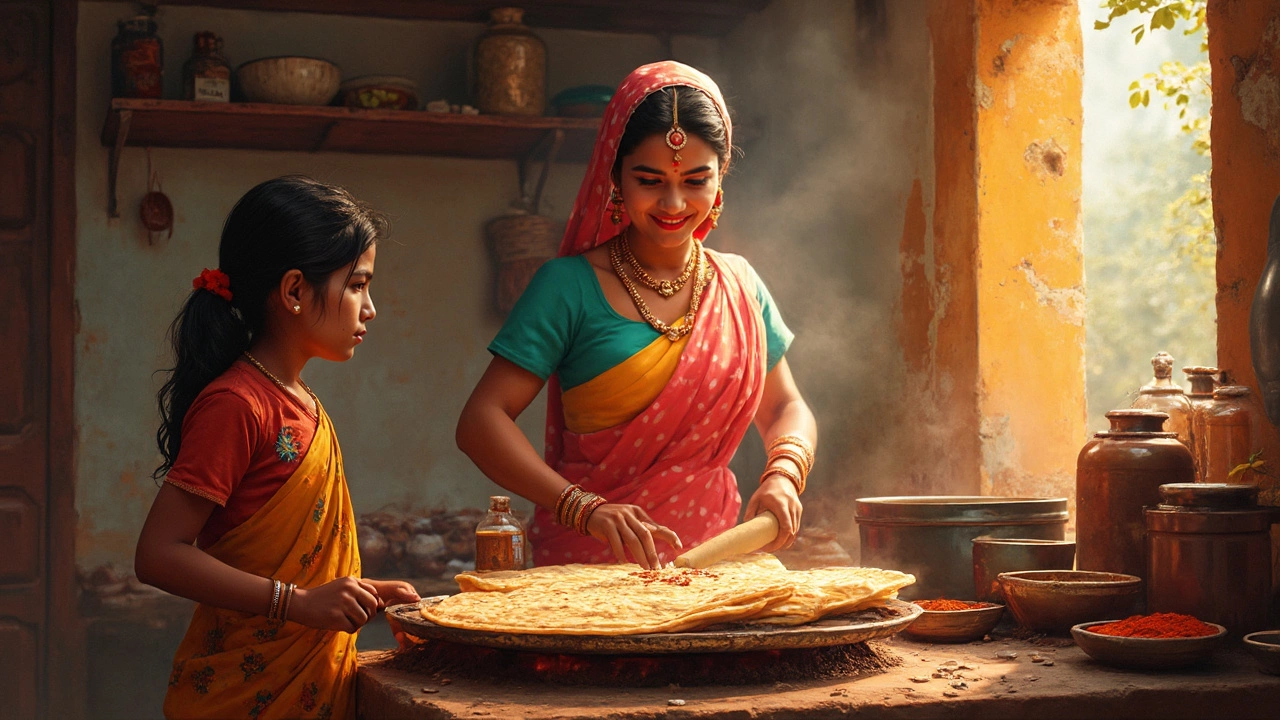Roti Preparation: Master Soft, Fluffy Chapatis
When working with roti preparation, the art of turning simple flour into light, flexible Indian flatbread. Also known as chapati making, it blends technique, ingredient balance, and heat control to deliver that satisfying puff. The process starts with whole‑wheat flour, a finely milled protein‑rich base that gives roti its structure and ends on a hot skillet where the dough meets direct flame. Understanding each step helps you avoid common hiccups like a flat, dry roti that refuses to puff.
One of the biggest game‑changers in soft roti is how you treat the dough. Adding a splash of oil, usually a neutral oil like sunflower or canola, keeps the gluten from tightening too much and adds a subtle richness. Some cooks swear by a pinch of baking soda, which creates tiny air pockets during cooking and can make the roti puff faster, while others prefer baking powder, a leavening blend that gives a gentle lift without altering flavor. The key is consistency: mix the flour, water, oil, and any leavening into a smooth, non‑sticky dough, let it rest for at least 15‑20 minutes, then roll it out to an even thickness. Rolling too thin can cause tearing, while too thick blocks puffing; aim for a 1‑2 mm sheet for the best balance.
Key Factors That Influence the Final Roti
Temperature plays a starring role. A pre‑heated skillet ensures the moment the roti touches the surface, steam forms inside, pushing the dough outward. If the pan is too cool, the roti dries out; too hot, and it burns before it puffs. Many home cooks use a medium‑high setting, testing with a small dough piece first. After placing the roti on the pan, wait for tiny bubbles to appear—this signals the starches are gelatinizing and the surface is ready for a flip. The second side cooks quickly; a quick press with a cloth or a spatula can help the roti puff fully, creating that classic balloon shape.
Beyond the basics, a few extra tricks can elevate your roti game. Lightly dusting the rolling surface with flour prevents sticking but avoid over‑flouring, which can make the roti dry. Incorporating a tiny amount of yogurt or milk into the dough adds extra moisture, helping the roti stay soft after cooling. Finally, storing cooked rotis in a kitchen towel keeps them warm and prevents them from hardening. With these insights, you’ll notice how each variable—flour type, oil addition, leavening choice, and pan heat—interacts to shape the final product.
Ready to see these tips in action? Below you’ll find a curated collection of articles that dig deeper into each element of roti preparation: why roti sometimes won’t puff, how to use baking soda or baking powder, the best moment to add oil, and more. Dive in, experiment, and soon you’ll be serving perfectly puffed, soft chapatis at every meal.

Unveiling How Different Cultures Prepare and Enjoy Roti
Roti, a staple in many cultures, reflects diverse culinary traditions through its preparation and consumption methods. From Indian kitchens to Middle Eastern homes, the humble roti varies greatly in style and ingredients. Understanding how to make roti, alongside exploring its nutritional aspects like calories in 1 roti with ghee or sabzi, provides a holistic view of this beloved bread. Whether you're counting calories or curious about cultural eating habits, this guide offers insight into the versatile world of roti.